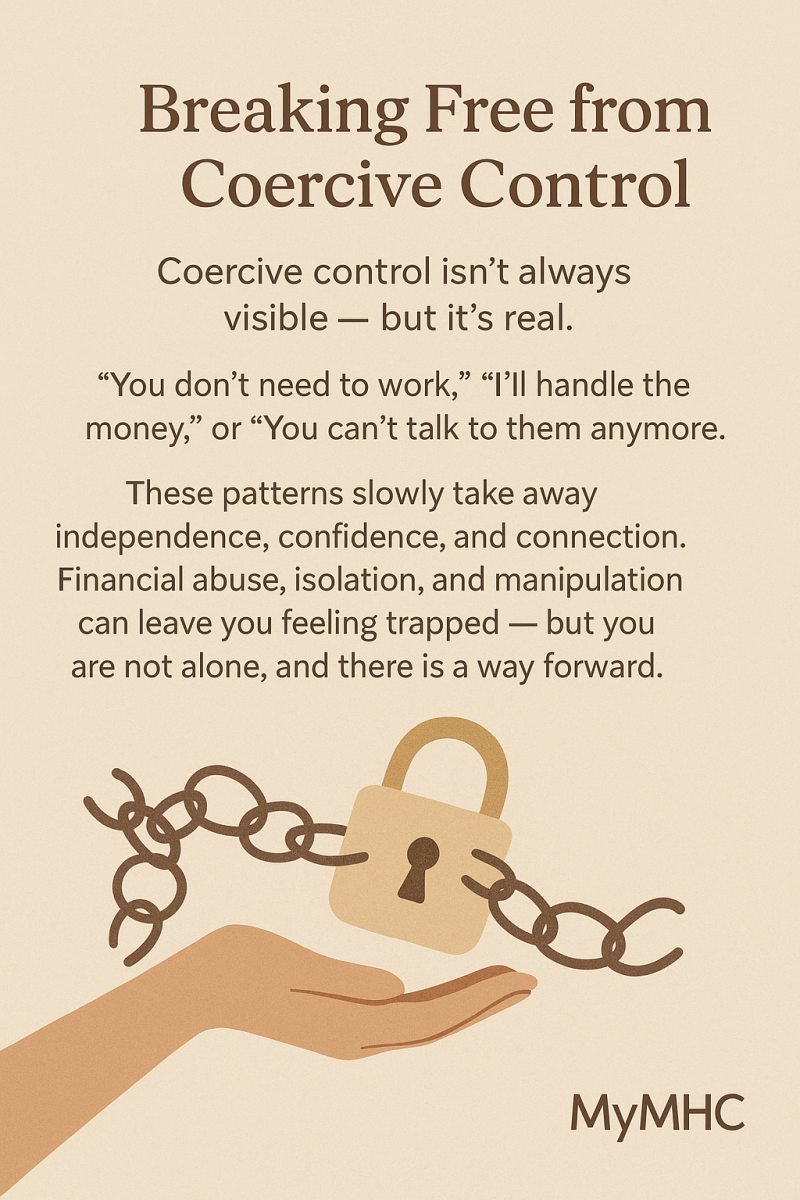Coercive control is one of the most harmful - but often least visible - forms of abuse. It doesn’t always leave bruises or scars, yet it can deeply affect your confidence, safety, and ability to live freely.
What is Coercive Control?
Coercive control is a pattern of behaviours used to dominate, manipulate, or isolate another person. It’s not about one argument or a bad day - it’s an ongoing strategy designed to erode your autonomy and make you dependent.
It might include:
- Monitoring your movements or messages
- Isolating you from friends, family, or support
- Gaslighting - making you question your own memory or perception
- Using threats, guilt, or fear to control decisions
- Restricting your access to money, transport, or essentials
These behaviours can create confusion and self-doubt, leading you to feel trapped or powerless.
Financial Abuse and Manipulation
Financial control is one of the most common forms of coercive control. It limits your independence by restricting access to financial resources.
Examples include:
- Controlling all bank accounts or demanding receipts for every purchase
- Preventing you from working or studying
- Withholding money for essentials like food or healthcare
- Forcing you to take out loans or debt in your name
Over time, this kind of abuse makes it difficult to make choices or leave safely. The intention is the same, to keep you dependent and fearful.
Breaking Free and Reclaiming Control
1. Recognise what’s happening
You are not overreacting or imagining it. Coercive control is real and can have serious emotional, psychological, and financial impacts. Understanding the pattern helps you name it and that’s the first step toward change.
2. Reach out safely
Talk to someone you trust, such as a friend, family member, counsellor, or psychologist.
If you’re in Australia, you can contact:
- 1800RESPECT (24/7) — 1800 737 732
- Lifeline — 13 11 14
- Safe Steps — 1800 015 188
3. Create a safety and financial plan
If it’s safe, start setting aside important documents and some funds in a separate account. You can also speak with a financial counsellor or domestic violence service about rebuilding independence and accessing emergency support.
4. Seek trauma-informed support
Healing from coercive control takes time. A trauma-informed psychologist can help you process what’s happened, rebuild your sense of self, and regain confidence in your decisions and boundaries.
5. Know your rights
Coercive control is increasingly recognised under Australian law as a form of domestic abuse. You may be able to access legal protections such as a Domestic Violence Order or financial support through Centrelink or Legal Aid.
Moving Forward
Leaving a controlling relationship isn’t just about walking away. It’s about reclaiming your freedom, dignity, and sense of self. With the right support, recovery and independence are possible.
You deserve safety. You deserve choice. You deserve a life that is truly your own.
Visit www.myMHC.com.au if you need assistance navigating this difficult transition.
#CoerciveControl #FinancialAbuse #TraumaInformed #DomesticViolenceAwareness #YouAreNotAlone #HealingJourney #MyMHC #Empowerment #PsychologicalSafety



Add comment
Comments